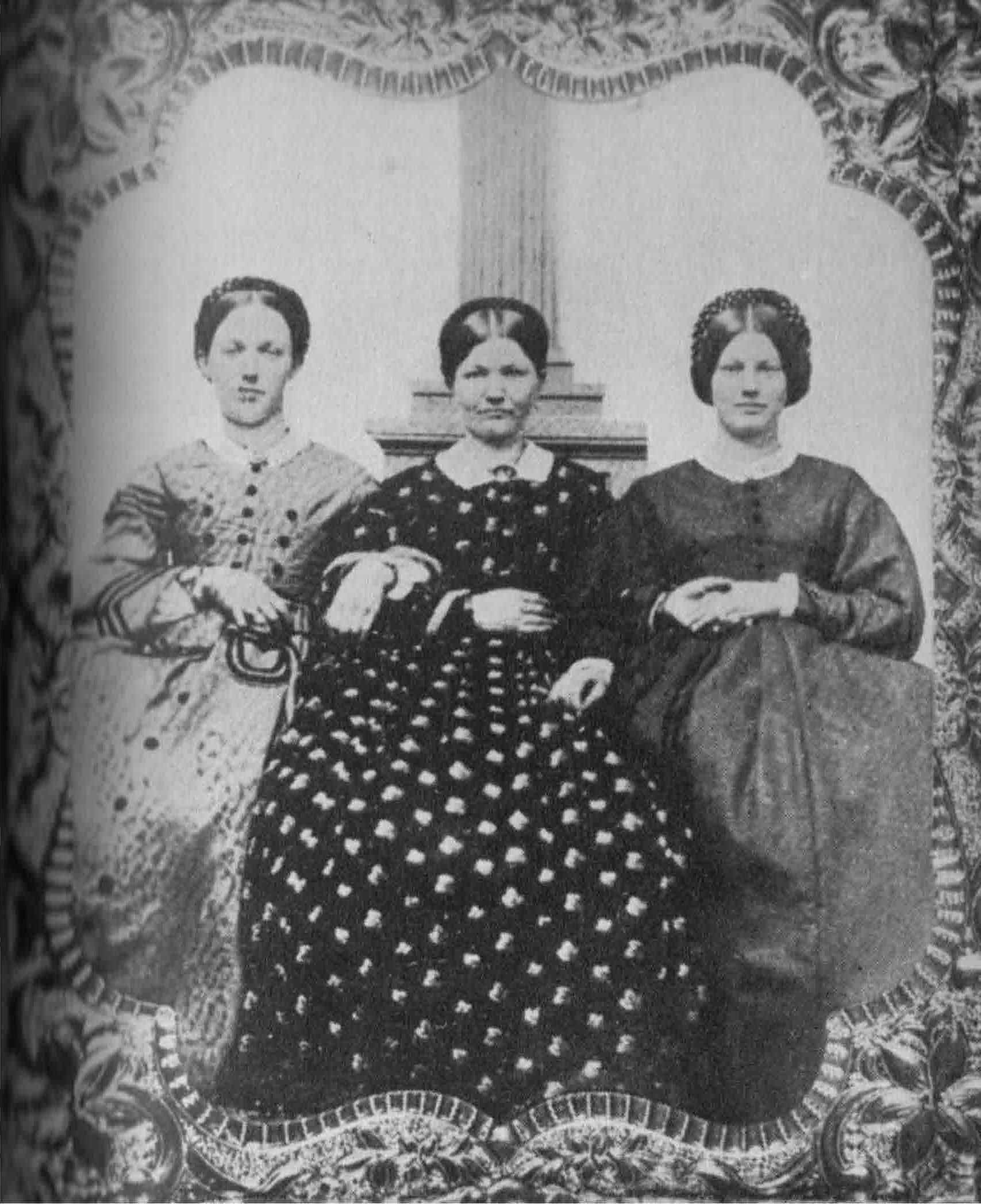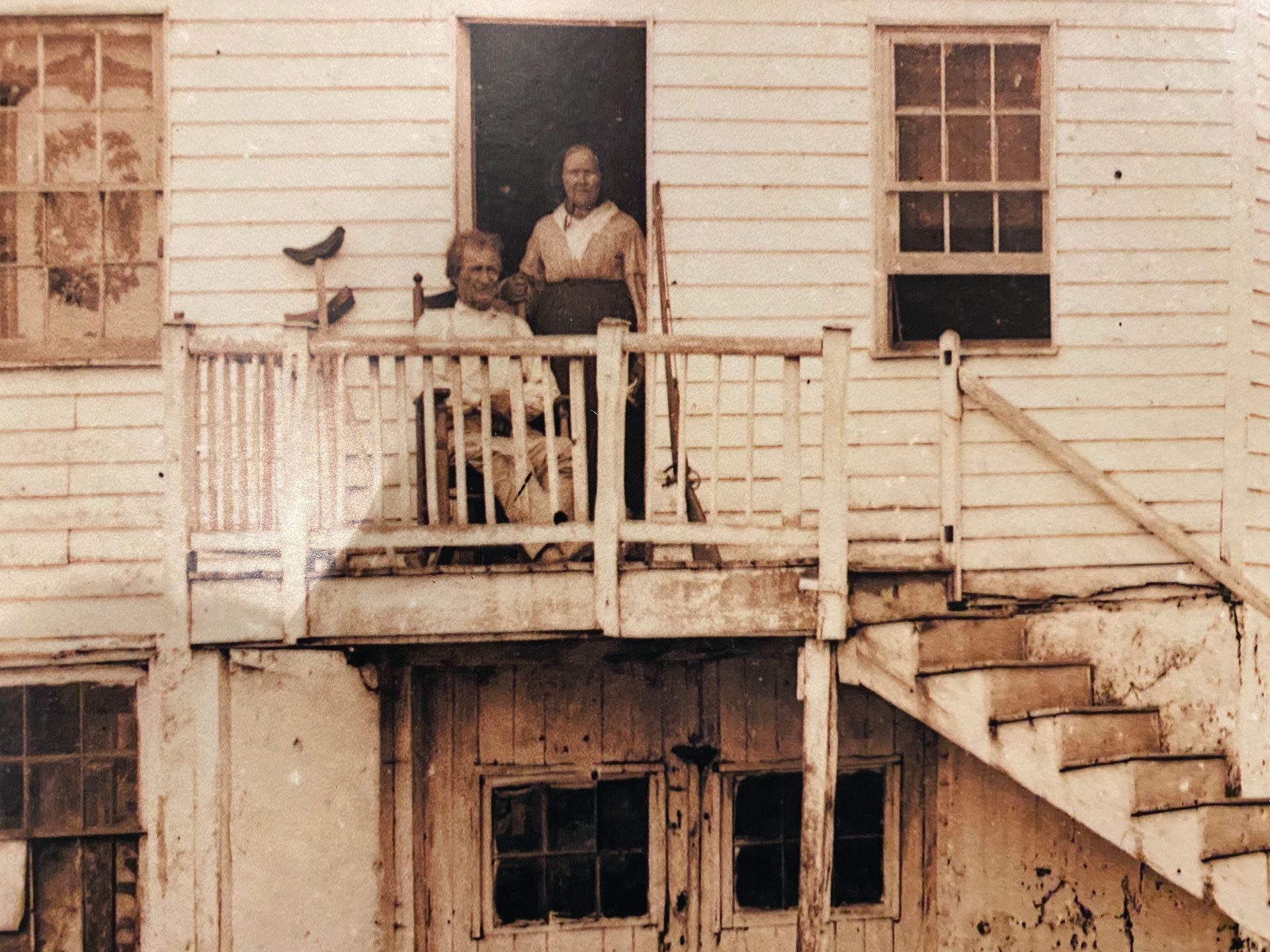Gettysburg's Civilian Casualties
by Diana Loski

Jennie Wade (r.) was the only civilian killed during the Battle.
(Gettysburg National Military Park)
On May 21, 1843, Mary Virginia Wade was born in a small clapboard house on Baltimore Street. She has become one of Gettysburg’s most famous citizens, as, at the age of twenty, she was the only civilian killed during the Battle of Gettysburg. Shot in the back of the heart from a stray bullet as she bent over her dough tray to feed hungry Union soldiers, Jennie died instantly at her sister’s rented house on Cemetery Hill. Jennie Wade will always be remembered for her terrible sacrifice at Gettysburg.
However, Jennie Wade was not the only civilian casualty at Gettysburg. There were many more, and their stories are every bit as tragic.
A casualty is defined as one who is killed, wounded, or missing (which can signify that the person is captured, or destroyed so completely that the body is non-existent). These casualties signify those who are lost to their respective armies, in the military sense. Civilians, though, can be casualties too. They can be killed, wounded, or captured – and there were multiple examples at Gettysburg.
While Jennie Wade was the only civilian to be killed during the Battle of Gettysburg, there were others who died because of the battle – they just succumbed after the battle had ended.
Ephraim Wisler was a “master blacksmith”, a Mennonite civilian who lived with his wife, Louisa, and their two sons, George and Andrew, in a small but stately brick home on the Chambersburg Pike just outside of town. Their home still stands with a stone that marks the place of the “First Shot Marker”—the beginning of the Battle of Gettysburg on July 1, 1863.1
Ephraim served briefly with the state militia, in the cavalry, for just two weeks from September 11 to 25, 1862. He was honorably discharged with no mention of the reason; health was possibly the cause. The following June, he again registered for the draft, but was living with his family at their home outside Gettysburg when the battle reached them. The loud explosion from a shell that detonated close to him so startled the unnerved Wisler that he suffered a stroke and “he became totally prostrated”. He lingered for five weeks, dying on August 15, 1863. His draft registration shows his name marked through with a read line, with the simple explanation “Dead.” He was buried in the Lower Marsh Creek Cemetery near Fairfield, Pennsylvania.2
Because Ephraim was a blacksmith and the only source of the family income, his sons were turned over to the state until his wife remarried.3
Shortly after the battle ended, innumerable crowds came to Gettysburg to find their loved ones, to aid in nursing the wounded and bury the dead, to hunt relics, and to see the historic field. There was a demand for battlefield relics, and many enterprising civilians saw a way to earn money. One of them was seventeen-year-old James Culp, who was too young to enlist at the time. Fascinated with the field with its innumerable accoutrements and artifacts that were left behind, he began collecting them; when the opportunity arose, he proceeded to sell them to interested visitors. He found several unexploded shells during his explorations – more common from the Confederate artillery as their fuses were made of paper – and learned to diffuse them by emptying them of their gunpowder before selling them. In September 1863, James was attempting to diffuse one of the shells he had found, when it exploded. The blast killed him instantly.4
Two months after James Culp’s unfortunate demise, another unexpected find caused a similar tragedy. Mr. Russell Biggs, a father from Philadelphia, came to Gettysburg in November at the time of Lincoln’s Gettysburg Address to locate the body of his son who was killed in the battle. A local civilian, Solomon Powers, agreed to help him – something the kindly stonecutter often did. The pair was unsuccessful in locating the young soldier, but they found an unexploded shell, “that was a common sight” on the field. Biggs decided to take the shell back to Philadelphia, and carried it to the Powers home on West High Street – where Mr. Powers also had his masonry shop and blacksmith implements. It appears Mr. Powers was not in the shop at the time, but his young apprentice, fifteen-year-old Allen Frazier, was. As Mr. Biggs attempted to empty the shell of its deadly gunpowder, the bomb exploded. Allen Frazier was killed instantly, blown in half, and Mr. Biggs was mortally injured – his eyes were blown out, his hands blown off, his legs and arms shattered. The newspaper article that documented the terrible accident lamented, “ it is impossible that he will recover.” In January 1864, Mr. Biggs’ obituary appeared in a Philadelphia newspaper.5
Both of the unfortunate boys, James Culp and Allen Frazier, are buried in Evergreen Cemetery.
Civilian Julia Culp also died young as a result of the Battle of Gettysburg. A year younger than her cousin James in the summer of 1863, sixteen-year-old Julia was the youngest of the Esaias Jesse Culp family. Her brother, John Wesley Culp, was killed on Culp’s Hill on the morning of July 3, 1863 – fighting for the Confederacy. Another brother, William, fought for the Union but was not present at Gettysburg. Julia and her sister, Annie, lent their aid in nursing the wounded after the battle. Julia spent many hours assisting in amputations and the strong odor of ether, used to render the wounded soldier unconscious, soon made her ill. She also worked with embalming the dead, and that fluid also released toxicity. Julia was one of the Gettysburg women who soon became seriously ill from the effects of both liquids, which affected her nervous system and her circulatory system. She was never in good health after Gettysburg.6
Julia moved to New Jersey and married John Willever, but died soon afterward, in 1868, at the age of 21. Her death certificate marks the cause of death as “ the effects of embalming fluid that she was exposed to while serving as a nurse after the Battle of Gettysburg.”7
John Burns, the man known to history as “ the Hero of Gettysburg ” was a more fortunate casualty. He survived the battle and its long-term effects. Born in Burlington, New Jersey in 1793, Burns was a veteran of the War of 1812 and later the War with Mexico. He and his wife, Barbara, lived in Gettysburg when the war erupted in 1861. Burns soon offered his services to the Union, but was dismissed due to his advanced age. He instead served as the town constable when war came to Gettysburg in the summer of 1863.8
Eager to get into the fight, Burns headed to the battlefield on July 1, 1863 – a short distance from his home on the western edge of town. Borrowing a rifle from a wounded Union soldier, Burns walked out to McPherson’s Ridge, where he joined the ranks of Pennsylvania infantry troops, part of Colonel Roy Stone’s Brigade. Burns proved a marksman, causing many a Confederate to fall with deadly accuracy. He was, however, wounded “ with seven balls.” One of the wounds in his leg prostrated him, and when the Confederates swept the ridge, Burns was left among the dead. “I lay on the field all night,” Burns remembered. In the morning he crawled to a house, where Confederates found him, and took him to his house. “Their doctor dressed my wounds,” he recalled, and “I was closely questioned by two rebel officers.” An old man, not in uniform, was suspicious to the Confederate military. Burns was indeed what both sides called a bushwacker – a civilian fighting in the war, where the rules of war do not apply. Burns, in danger of being executed, convinced the officers that he was just caught in the crossfire. His wounds healed, and Burns enjoyed many years of celebrity – including meeting Abraham Lincoln. He died in February 1872 from pneumonia, at the age of 78.9
It is hard to describe the sheer volume of battlefield debris left after the two armies vacated Gettysburg. Many of the soldiers’ personal items were left behind, including knapsacks, haversacks, diaries, canteens, cartridge boxes, letters, and weapons. As the civilians came back to town, they discovered up these countless items up to weeks and even months later. Even in town, the detritus cluttered the streets. On Baltimore Street, near the crossroads of Breckinridge Street, a group of boys found a discarded musket. One of the boys picked up the weapon and fired it. The bullet struck a young ethnic girl, who was walking nearby. She was killed instantly. Her name is still unknown.10
Georgianna Stauffer, a mother of two who, like many of the women in town wanted to render aid to the Union soldiers, lived on Baltimore Street. While carrying water to the soldiers, she was shot in the hip on July 2. She fortunately survived. Three more Gettysburg youths, all young men, were wounded while watching a skirmish before the Confederate retreat early on July 4. The boys were Frederick Lehman, Amos Whetstone, and Jacob Gilbert, and all suffered gunshot wounds. They were fortunate that their wounds were not severe.11
In addition to the killed and wounded, there were several Gettysburg civilians captured during the battle. Most of them were accused of spying. The men taken were George Patterson, Samuel Pitzer, James Crawford Gwinn, Alexander Harper, William Harper, George Codori, George Arendt, and Emanuel Trostle. Some of these men were taken near the Pitzer farm, others were arrested in other spots, mostly because they inadvertently crossed the Confederate pickett lines when they were on their way home from work or aiding other civilians. George Patterson and his nephew Samuel were related to the Pitzer family. J. Crawford Gwinn was a store owner in the Square. George Codori was a butcher who lived on West Middle Street – an immigrant from France.12
Of the captured Gettysburg civilians, two died from exposure or illness contracted in the Confederate prison camp in Salisbury, North Carolina. William Harper died in the camp. George Codori and the others were finally paroled, but Mr. Codori died five days after reaching home, due to contracting pneumonia during his last days as a prisoner of war. His great-grandson, during a speech, said, “the arrest was for what offense no one knows.”13
George Patterson arrived home on the day of his mother’s funeral. He learned upon his arrival that his wife had died shortly after the battle. It was a bittersweet homecoming for him.
14
“Everything suffers in war,” asserted Gettysburg farmer Nathaniel Lightner. “People all suffer, animals suffer, the plants suffer and droop and die; the little birds are killed or are frightened away…the trees are torn from shot and shell…grain and grass are eaten up or trodden into…springs and wells…are supped to the last drop.”15
There were additional injuries incurred by civilians in Adams and York Counties. Like Julia Culp, there were an untold number of women and men who were sickened, some severely, by the miasma of death and the exhaustion of caring for the thousands of wounded soldiers left behind. No matter how intense the study of Gettysburg, the true horrors of those three days, and the suffering by all during and after the fight, can never truly be comprehended.

John Burns (seated) at his Gettysburg home
(Library of Congress)


